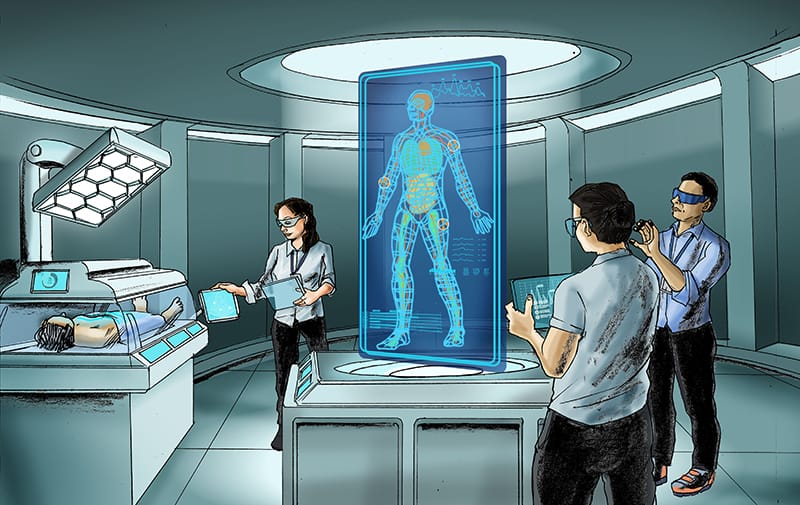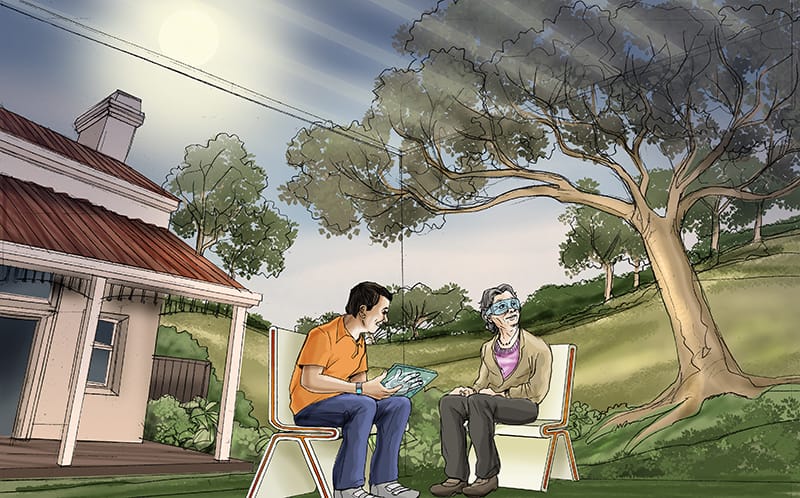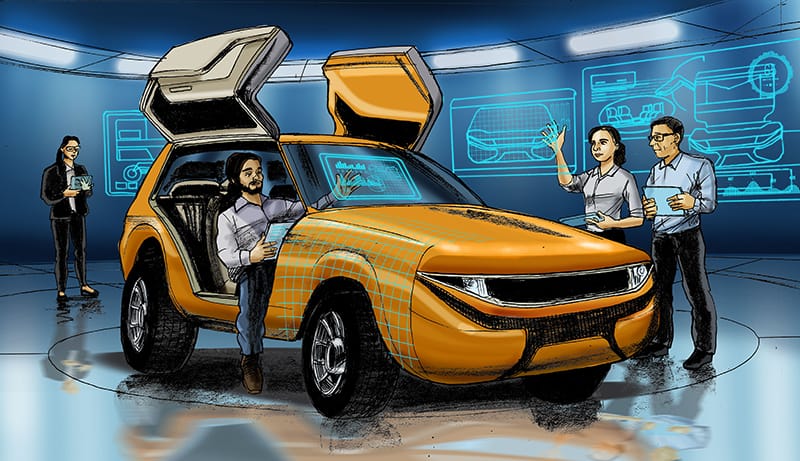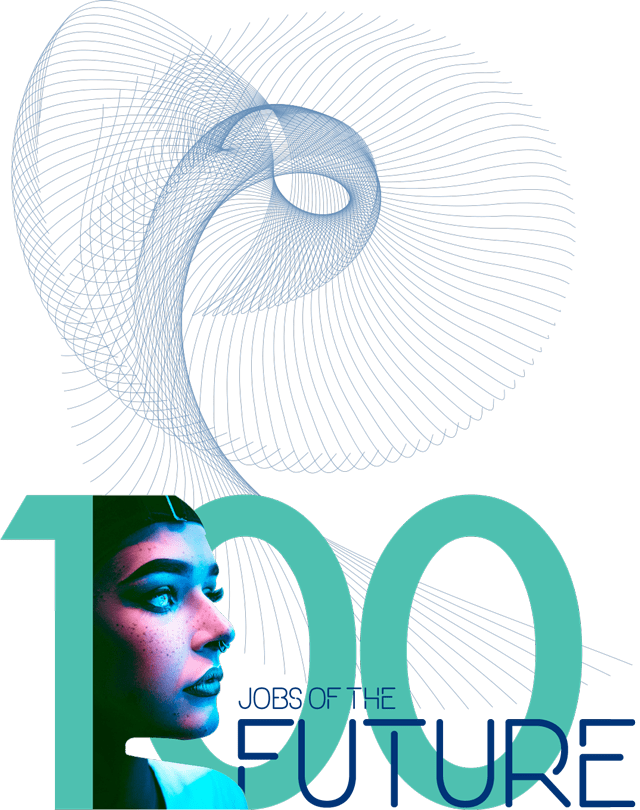Executive summary
Writing on work futures is generally in agreement about the major drivers of change, including technological change — artificial intelligence, robots and big data, as well as innovation in materials, propulsion and energy strategies, climate change, globalization, population pressures and changed demographic profiles. The implications for jobs are more vague, and futurists spread along a continuum stretching from predictions of dystopian futures to optimistic predictions of a better life for all.
In this research we review the literature on work futures, noting a long history of concerns about technological disruption that have proved unfounded in the broad sense, but acknowledging that the disruptive effects of the drivers above will lead to uneven patterns of change. Machines are already taking over many repetitive jobs and increasingly encroach on professional work such as accountancy or office work. It is apparent that there will be a shift in emphasis to more skilled, and professional jobs, but pundits are divided on whether these changes will bring net job losses or net job creation.
Trends away from routine jobs towards non-routine manual and especially cognitive skill work are already apparent, and will continue. There are a number of threads in the literature concerning the skills that will be increasingly valued in the new workplace. These include entrepreneurial skills, involving adaptability, autonomy and self-direction, in a situation where workers will need to sell their skills across many jobs, and incorporate freelance work among these. Increasingly, people in all jobs will need digital skills, and STEM / STEAM skills are advocated by many as the basis of much of the changing economy. Interpersonal skills will become more important as many routine jobs, or routine aspects of jobs, are taken over by machines, and there will be a need for people to work creatively at the human-computer interface. Many argue that this will make jobs more interesting and rewarding, creating more room for personal and community values, creativity and imagination. The general view is that people, in future jobs need to be working with machines, rather than competing with them.

In this research our aim has been to interrogate these work futures through the predictive construction of ‘100 jobs of the future’, that go beyond generalities of trends and skills, and offer a grounded, but complex and imaginative projection of future work. Through creating this list of jobs, we have generated a representation that we hope will inform the public, and youth yet to enter the labour market, on what future of work may entail, and what skills and interests will best prepare people for this future. Other commentators have come up with such job lists, but our aim has been pursue this in a rigorous fashion by drawing on selected industry and disciplinary experts well-placed to talk about trends in their fields.
After a comprehensive review of the literature (summarised above) we identified key domains, such as agriculture, health and games, that will become an increasing focus of future work, and used these to identify eleven experts familiar with cutting edge developments in their fields of expertise, but also thought leaders well-placed to comment on the future more generally. We interviewed each of these experts The world of work is changing dramatically, already causing significant disruption in patterns of jobs and raising questions about what work will look like for individuals, what skills will be needed, and how youth might prepare for productive work in a future where they will have many jobs and even multiple careers over a lifetime using a protocol based on the literature findings, asking them first to identify trends and areas of growth in their disciplines, then through a structured conversation, identified broad work patterns, specific jobs that may be created and become important, and the skills that such jobs would demand. We then synthesised the information gathered from each interview to scope and develop a sample of 100 future jobs that captured the breadth of trends, skills and work patterns identified.
The experts’ perspectives were broadly consistent with the literature, but they provided fresh insights and varied perspectives on a range of aspects of future work. A number talked about the increasingly intimate relationship of machines to humans, and human needs, and the possibilities this opened up. A number saw the human-machine interface as being a major focus for future jobs, for translators of technology for users, or as interpreters and communicators of people’s needs to programmers and designers. The interviews affirmed the unique advantages we as humans have over machines, and productive ways we can work with machines rather than compete with them.
Regarding skills, the experts had much to say. Transdisciplinarity was a major theme, referring to the need for a strong disciplinary base but combined with breadth of knowledge of other areas, with technology skills, and with creativity. Another theme was the importance of human skills, increasingly relevant in a world where machines do the routine work, and relevant also for cross-disciplinary team work. A third theme was the need for flexibility and adaptability in the face of change, and the importance of the capacity to continue to learn, and be strategic about learning, over a lifetime.
The sample of 100 jobs of the future portrays a world of work that continues to offer a breadth of career opportunities across all sectors. Whilst we set out to identify new jobs and explore the impact of the major drivers of change on the future workplace, our research kept reminding us that the world of work has always been evolving and technology has already disrupted many domains. At the same time, some jobs will change very little, for example those that involve skilled manual work that machines cannot duplicate or jobs that make economic sense to continue as they are.

Some of the 100 jobs of the future are variations of those that already exist, possibly with more technology enablement that delivers instantaneous outcomes where currently processes are protracted, or more personalisation that modifies the role to become mainstream in a different form. For example, a personal brand manager or a data privacy strategist will evolve from job roles that currently service organisations, to roles that service individuals in a future world where managing digital identity and security becomes a necessity. In contrast, a future nostalgist that recreates remembered experiences for the elderly, or a 100 year counsellor, who enables centurions to enjoy a “third age”, are new jobs that will emerge as medical advances keep extending human life.
We also clustered the 100 job roles into eleven broad categories based on the type of work undertaken: Technology, People, Law, Business, Environment, Urban, Agriculture, Health, Data, Experience and Space. Unsurprisingly, we found that jobs across all these categories are influenced by the major drivers of change: technological advances, climate change, data democratisation, globalization, population pressures and changed demographic profiles, and most also require a multidisciplinary skill set. A wellness consultant or nutritionist having a health job, for example a health shaper, will require a high level of digital and data literacy to provide bespoke services informed by health data and predictive modelling; a design engineer of the future, for example an autonomous vehicle profile designer with a tech job, will also need to have a background in interior design, and possess excellent creative and visual artistic skills required in experience jobs. This fusion of skills and perspectives from different domains will create new multi-disciplinary fields that advance what is possible, trigger new drivers of change and redefine the jobs of the future.




